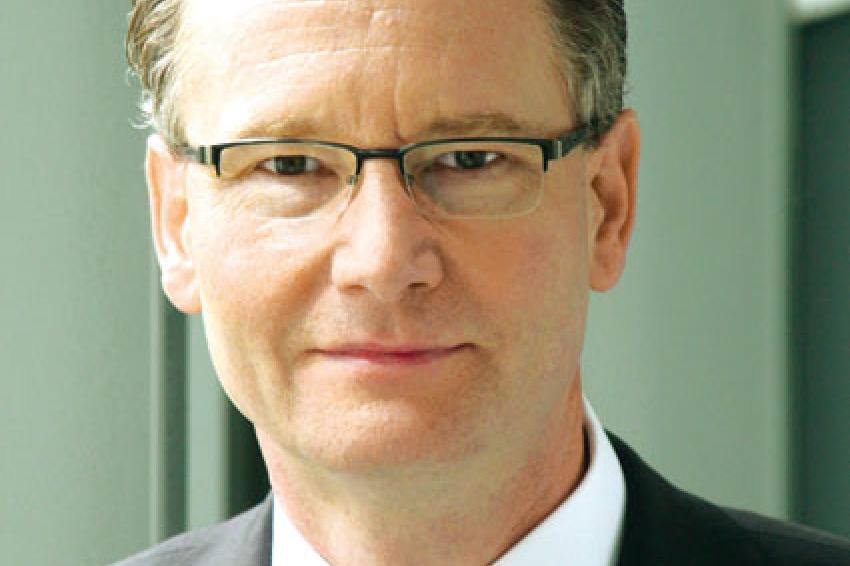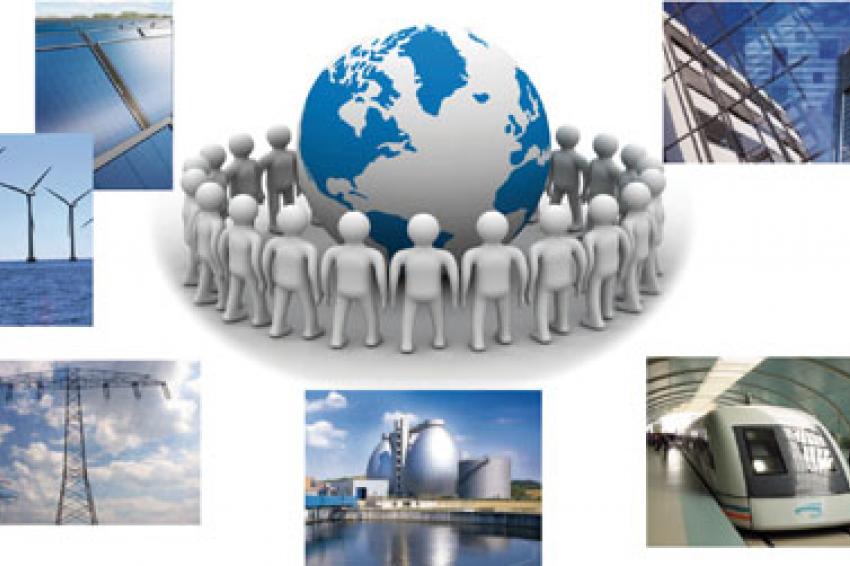Automation Is The Future
The Contribution of Automation to Tackle the Challenges Facing Society
In 2008, the international market for automation-related products amounted to about €290 billion, and its future growth is currently estimated at 6% to 8% annually. The German automation industry represents approximately 12% of this market. With around 230,000 employees, it generates about one quarter of the turnover in the entire electronics industry, which is the second-largest sector in Germany.
Today, automation technology is one of the integral pillars supporting Germany's position as a top industrial location, and it is one of the leading technological industries worldwide. However, the public perception of automation technology is in contrast to its actual importance. As a technology that works behind the scenes-or "under the hood"-to ensure that machines run, production facilities work, power plants provide energy, and much more, automation is often completely overlooked or even viewed as a job killer. If this situation does not change, it could have fatal consequences for the future existence of a sufficient pool of technical professionals in the field. Regardless of this fact, there is no question that automation in Germany has strong economic and technological prospects. The statement used in the title, "Automation is the Future," takes the topics importance a step further; its significance only becomes clear through negation: "No automation means no future."
Automation and the Future
So is automation the key to the future? The world is facing significant global societal challenges. Global energy requirements are increasing, resources are becoming scarce, Earth's climate is under threat, the growing global population has no guaranteed source of water, and the concentration of people in increasingly crowded urban areas is leading to the collapse of social infrastructures. This article, which is based on the "Integrated Technology Road Map for Automation 2020+" commissioned by Zvei (German Electrical and Electronic Manufacturers' Association), will explain the role that automation plays in tackling these challenges.
The global need for resources will exponentially increase in the coming decades, and all forms of energy are at the forefront of this issue. This growth is being driven by the increasing global population and developing nations' race to catch up with the standard of industrial technology in developed countries. Today, over two billion people essentially have no access to energy. If the developing countries India and China alone were to achieve parity with the level of consumption in developed countries, it would require the construction of two thousand 500-megawatt power plants. This growing hunger for energy is accompanied by a threat to the earth's climate from increasing CO2 emissions. Even more fundamental than this demand for energy is guaranteeing the global water supply. These challenges are also intensified by the growing urbanization of the world's population.
The Challenge of Energy
In a reference scenario based on existing regulations and technical solutions, the International Energy Agency predicts that the global demand for primary energy will double by 2050. The demand for electrical energy will actually triple within this time period. If we apply this BAU (business as usual) scenario, then CO2 emissions would increase from today's 28 gigatons per year internationally to 62 gigatons. The result would be an increase in the global temperature of six degrees Celsius by 2050. This would be an unimaginable alteration in the global climate that would have a tremendous impact on our habitats and food supply. However, if we apply the UN's climate goal of a maximum increase in the average temperature of two degrees Celsius, then current CO2 emissions would need to be cut in half. The energy challenge therefore has two points of leverage and is in line with the "Factor Four" concept: The growing global demand for energy must be reduced, and the percentage of low-CO2 energy must be simultaneously and disproportionately increased.
The Zvei technology road map 2020+ assumes that, in order to meet the rising demand for energy, power plant technology's market volume will increase by 5% to 10% annually. In developing countries, this market is increasingly determined by the need to modernize existing power plant technology. In North America and Europe alone, up to 1,800 gigawatts of existing power capacity will need to be reconstructed by 2030. In developing countries, new power plants are expected to cover the disproportionately growing need for energy. In China, for example, 300 new coal power plants, each with a capacity of 500 megawatts, were constructed in 2007 and 2008. Hundreds of additional coal power plants are planned for the coming years, driven by the Chinese economic program. These new fossil fuel-operated power plants need to be made more efficient, and their CO2 emissions must be drastically reduced.
However, in order to meet climate goals, the proportion of renewable energies in use must also be increased. Germany plans to generate up to 30% of electrical energy from renewable sources by 2020. China is already the world leader in wind power, and by 2020, the country will have installed 100 gigawatts of wind power capacity. However, this massive increase in decentralized energy will present enormous challenges for the existing grid structures. It will require new "intelligent" energy grids and strong IT-based links between decentralized producers and consumers.
Aside from low-CO2 energy production, the best way to protect the climate is to avoid consuming energy by means of energy-efficient processes and technologies. Potential for saving energy exists in both developed and developing countries. In the USA, for example, the average primary energy consumption per resident is nearly twice as high as in Europe, while developing countries such as India and China, which often use outdated technologies and processes, demonstrate disproportionately high potential in terms of energy efficiency. In addition to energy efficiency in industry, energy-saving buildings and efficient urban infrastructures will also play an important role in the future.
The key to implementing all of these approaches lies in automation technology. Decentralized renewable energy-based power plants-whether they are wind farms, solar energy plants, or cogeneration systems-require a greater number of automation technology components for control technology and communications technology. Integrating many decentralized energy providers requires new control technology-based integration, planning, and management. Linking up to consumers will also lead to intelligent grid structures-called "smart grids"-that will require even more automation technology. Energy-efficient buildings and integrated building management depend on automation technology just as much as energy efficiency in machines and industrial facilities do. This way, automation technology makes a sustainable contribution to protecting the environment and climate.
The Challenge of Water
One of the greatest challenges will be guaranteeing the supply of drinking water for the growing global population. Based on the numbers from 1975, the global demand for fresh water will have doubled by 2025. But even today, around one billion people have no access to clean water. The Zvei technology road map 2020+ assumes that Asia alone will require investments of around $16 trillion in the water and wastewater disposal industries within the next 25 years. A significant portion of this market volume lies in measurement, control, and communication technology, all of which involve automation products and systems. Currently, a new wastewater treatment plant launches operations every week in China. But even in developed regions, many wastewater treatment plants and water systems desperately need to be modernized.
Nearly 50% of all drinking water generated worldwide goes to waste due to poor quality or out-of-date water supply systems. By monitoring pipeline networks, automation technology solutions help to vastly improve water systems. The oceans, which account for around 97% of the water on earth, will need to be used as a source of drinking water in the future. Seawater desalinization plants would provide the ability to do so, but the required technology and processes would have to be further developed. Drinking water extracted from wastewater is an important resource, particularly for booming megacities. Here, too, automation technologies ensure that facilities are operated economically and efficiently, and that water quality remains high.
Automation and Social Responsibility
If we consider the global challenges presented here, the central role played by automation technology is clear. The GMA study "Automation 2020" also comes to this conclusion. The study demonstrates the importance of automation for the future of our society with three main theses:
- Automation makes a significant contribution to tackle future societal challenges.
- Automation is technology with people, for people.
- Automation is the leading discipline for the development, optimization, and application of new products, processes, and technologies.
Automation technology is therefore part of the solution to the problems of the future, not part of the problem itself. Awareness of this fact must be raised among politicians and the public; otherwise, our current strengths and opportunities will go to waste. Germany is one of the leading countries in the use of sustainable technologies and in automation technology. In many areas of automation technology, German companies are the current technological and market leaders. Good examples of areas where Germany leads include industrial communication technology, drive systems, functional security technology, control technology, electrical connection technology, and many more. The country's leading position is founded on its industry's unique combination of international companies on the one hand and a multitude of specialized mid-sized companies on the other. Domestically, companies in Germany's electrical technology industry can find leading international consumer industries; this combination of product and application in such close proximity creates enormous innovative strength. "Automation technology helps the industry work safely, cleanly, cost-effectively, and in a manner that conserves resources. Automation strengthens the entire industrial value-added chain and prevents the deindustrialization of Germany and Europe.", an important message extracted from the study "Mit Hightech für Umwelt und Klimaschutz" (High Tech Solutions to Protect the Environment and Climate).
Automation has many facets, but it is certainly not a job killer. Zvei assumes that the approximately 230,000 jobs in the German automation industry make a sustainable contribution to safeguarding at least three million jobs in energy-intensive industries in Germany. We can only maintain this position if we can continue to rely on the qualified professionals and talented experts who will create opportunities in this field in the future. Even today, current studies show that Germany lacks over three thousand engineers, a large number of whom are needed in the automation industry. In addition, there are only nine university graduates for every ten engineers that retire.
Tackling humanity's greatest challenges will require automation. If we, as a national economy and industry, hope to contribute to this trend and take part in it in the long term, then we must recognize our social responsibility and get young people involved in and excited about automation. It is our national duty to make it clear to all members of our diverse society that the future needs automation, and that automation is the future.
Contact
Phoenix Contact GmbH & Co.KG
Flachsmarktstr. 8
32825 Blomberg
Nordrhein-Westfalen, Germany
+49 5235 341 713
+49 5235 341 825







